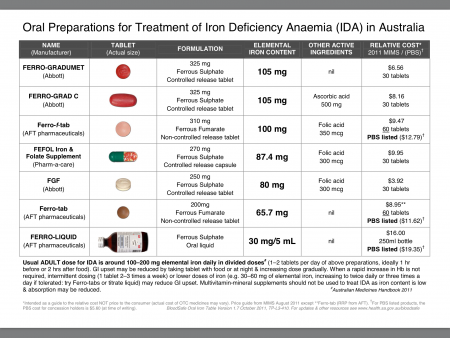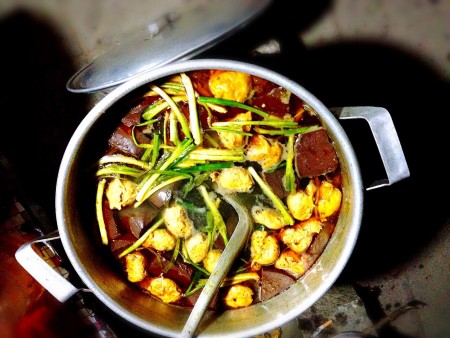
I have iron deficiency. How do I replace iron?
Have you been told that you have an iron deficiency and are not sure where to go next? There are more than 100 oral iron replacement supplements and preparations over the counter in Australia and it can be difficult to know the difference between them all. If you are looking for information on the ins and outs of oral iron replacement or considering the other available options, this is the blog for you.
In general there are 3 non-dietary ways to replace iron. Oral, intramuscular (injection into the muscle) or intravenous (IV or through a vein).
ORAL IRON REPLACEMENT
Oral iron is the least invasive option and often the easiest to obtain as it is available over the counter. It is great for people who can tolerate it, and who have mild iron deficiency. But it is not for everyone as it can cause gastrointestinal side effects such as constipation, nausea, vomiting, diarrhoea or black discolouration of stool. Also, it can take several months to replace iron through oral supplementation.
Oral iron is absorbed poorly but more completely on an empty stomach 1 hour before or 2 hours after food. If you experience stomach upsets with oral iron, here are a few tips to minimise this:
- start at a lower dose and gradually increase as tolerated
- have smaller and more frequent doses
- use liquid iron in divided doses
- take it shortly after food (even though this reduces the absorption)
For adults, the dose required for treatment of iron deficiency anaemia is 100 – 210mg daily in divided doses. Usually it takes 2 – 4 months to fully correct iron deficiency anaemia. There are numerous oral iron replacement supplements in the market and I have found a great link published by South Australia Health with comparisons of the common iron replacement supplements and the costs of each. Click on the picture below for the link.
 When taking oral iron, it is important to note that milk, coffee or tea can reduce the absorption of iron so should not be taken together with iron supplements. Some medications such as antacids, calcium, thyroid tablets and some antibiotics can also reduce the absorption of iron and should be taken at a different time of the day.
When taking oral iron, it is important to note that milk, coffee or tea can reduce the absorption of iron so should not be taken together with iron supplements. Some medications such as antacids, calcium, thyroid tablets and some antibiotics can also reduce the absorption of iron and should be taken at a different time of the day.
INTRAMUSCULAR (IRON INJECTION)
Intramuscular injection is an alternative for people who are unable to tolerate oral iron but it sometimes cause pain and permanent staining around the injection site. It also requires multiple injections for people with severe anaemia. Intramuscular iron injection has been superseded in recent times by intravenous iron.
INTRAVENOUS (IV) IRON INFUSION
For injectable iron replacement, intravenous iron infusion is now the preferred option as it is a fast and effective modality. Iron infusion is widely used for the treatment of iron deficiency anaemia when oral iron is inappropriate, ineffective or poorly tolerated. Iron is infused through the vein over 20 minutes and most people would experience relief of symptoms within 1 – 2 weeks. Here is a link to our Iron Infusion Clinic.
MAINTENANCE OF IRON THROUGH DIETARY INTAKE
While diet along is insufficient to treat iron deficiency anaemia, once iron has been replaced, it is important to maintain adequate dietary iron to prevent further deficiency.
The recommended daily iron intake can change with gender and age. Women have highest need of dietary iron. Here is the recommended daily iron requirement:
For premenopausal women, 18mg of iron a day is required.
For pregnant women, 27mg of iron a day is required.
For men and post menopausal women, 8mg of iron a day is required.
While I was looking for pictures and examples of iron rich food, I found this photo that I took on the street market of Vietnam:

This “pig blood soup” is one example of food rich in iron! I can understand if this is not everyone’s cup of tea. Luckily, there are many other sources of food rich in iron such as red meat or greens.

I am not a dietician but my googling skills has led me to this great document with examples of how much iron is in the different food groups and samples of a iron rich meal plan for men and women. Click here for this nutrition resource published by Queensland Health.
Managing iron deficiency anaemia is the easy part, the harder part is working out what is causing the iron deficiency. It is important to assess the cause of your iron deficiency as sometimes it is an early sign of a sinister disease such as bowel cancer. Click here read our blog on the causes of iron deficiency or here to find out more about our Iron Infusion Clinic.
To make an appointment to see one of our doctors, call 3257 0841 or book online.
References:
http://www.nps.org.au/publications/health-professional/nps-news/2010/iron-anaemia

Dr. Dora Lee
FRACGP MBBS (UQ) B PHTY (UQ)


